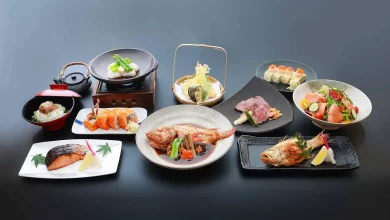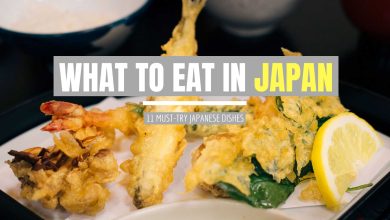A Culinary Odyssey Through Japan: Exploring the Rich Tapestry of Japanese Cuisine
Japanese Cuisine

Introduction:
Japan, a country rich in invention and history, has a gastronomic scene that reflects both its innovative culinary advances and its profound cultural heritage. This article takes the reader on a tour of the rich and varied world of Japanese cuisine, delving into the important components, classic recipes, historical inspirations, and contemporary reinterpretations that have made Japanese cuisine so popular across the world.
I. Historical Influences on Japanese Cuisine:
A. Shokuiku – Food Education: Japanese history and cultural customs are closely linked to the country’s food. For decades, culinary instruction, or shokuiku, has been an essential part of Japanese society. Shokuiku, which has its roots in the principles of harmony, seasonality, and love of the natural world, has an impact on all aspect of life, including food preparation and presentation design.
B. Culinary Influences from China and Korea: Historical interactions between Japan and Korea and China had a big impact on Japanese food customs. Rice farming, soy sauce, and other cooking methods were introduced, and these things created the groundwork for what would eventually become unique Japanese food customs.
II. Key Ingredients in Japanese Cuisine:
A. Rice: In Japanese cuisine, rice is a basic item that is highly valued. A meal’s whole experience greatly depends on the quality of the rice, which can be eaten on its own or as a side dish.
B. Fish and Seafood: Japan, which is encircled by the Pacific Ocean, has an abundance of seafood and fresh fish. The inherent tastes of seafood delicacies are expertly portrayed by Japanese chefs in a variety of grilled fish meals, sushi, and sashimi.
D. Noodles: Japanese food lovers like dishes that include noodles, such as ramen, udon, and soba (buckwheat noodles). Every variety of noodle has a distinct texture and is frequently used in cold meals, stir-fries, and soups.
III. Traditional Japanese Dishes:
A. Sushi: Sushi, arguably the most famous Japanese food, has captured the attention of people all over the world with its wonderful tastes and beautiful appearance. Sushi, which ranges from nigiri to maki rolls, demonstrates the skill of fusing fresh fish with vinegared rice.
B. Tempura: Tempura is a 16th-century Portuguese missionary-introduced culinary method that entails lightly battering and frying vegetables and fish. Tempura is delicate and crispy and is frequently served with dipping sauce.
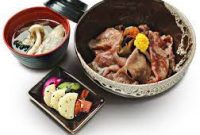
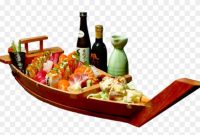
IV. Modern Innovations in Japanese Cuisine:
A. Izakayas and Pub Culture: Japanese bars known as izakayas have gained popularity due to its laid-back ambiance and wide selection of small bites. These places put a contemporary spin on classic pub meals with their wide selection of inventive dishes, which are frequently served with sake or beer.
B. Washoku UNESCO Recognition: In 2013, UNESCO designated washoku, or traditional Japanese food, as an Intangible Cultural Heritage. This recognition highlights the relevance of Japanese culinary traditions both globally and culturally.
V. Culinary Regions of Japan:
A. Kanto Region: Tokyo, which is part of the Kanto area, is a gastronomic melting pot with many different influences. Kanto is a great place to experience the diverse side of Japanese food, from the lively street food scene to upscale restaurants.
B. Kansai Region: The Kansai area, which includes Kyoto and Osaka, is renowned for its extensive culinary history. Here, one may enjoy traditional foods like takoyaki (octopus balls) and okonomiyaki (savory pancakes), as well as Kyoto’s elegant kaiseki cuisine.
VI. Cultural Significance of Meals:
A. Tea Culture and Kaiseki: The Japanese tea ceremony is the pinnacle of tea culture, which values simplicity and awareness. Kaiseki, which has its roots in the tea ceremony, is a celebration of balance, harmony, and seasonality.
VII. Global Influence and Fusion Cuisine:
A. Sushi and Beyond: Once a specialty food, sushi is now a worldwide sensation. Fusion cuisines, which combine local foods with Japanese flavors, have emerged as a result of chefs throughout the world being influenced by Japanese culinary techniques and ingredients.
B. Japanese Street Food: Japanese street cuisine is so popular that it has crossed national boundaries. Street food markets all throughout the world have devoted followers of staples like takoyaki, taiyaki, and yakitori (grilled chicken skewers).
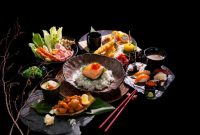

X. Conclusion:
Japanese food is a vivid tapestry made from a long history, numerous cultural customs, and an unwavering dedication to producing food of the highest caliber. Japan offers a wide variety of culinary experiences to suit a wide range of interests and preferences, from the simple street food booths to the elegant kaiseki dining experiences. The persistent ability of food to bridge cultural divides and provide happy, communal moments is demonstrated by the way Japanese cuisine continues to enchant audiences throughout the world.
